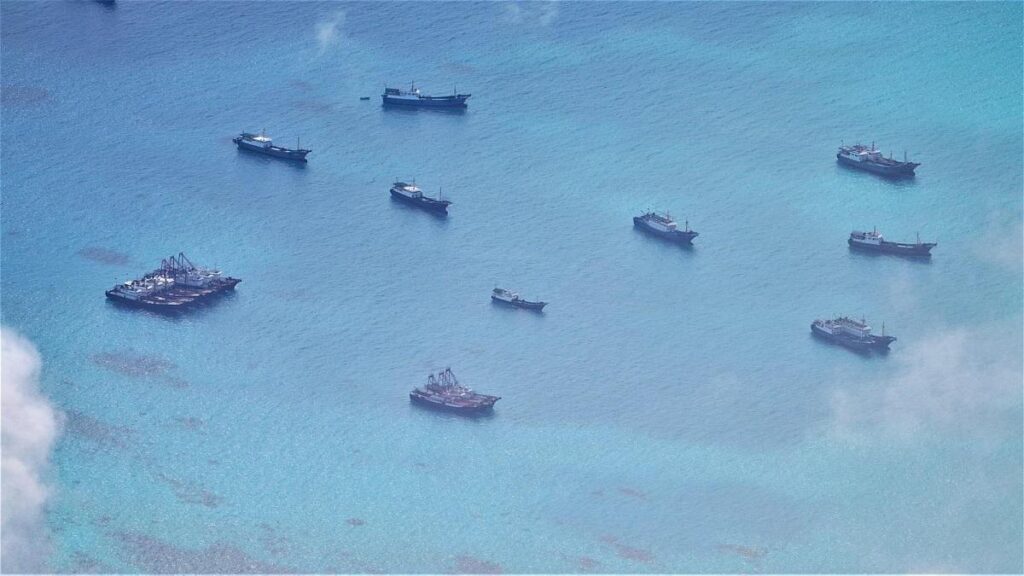AS MANY as 14 Chinese militia ships entered Sabina Shoal at the weekend after months of waning presence, a US think tank said on Sunday, citing satellite images.
The ships were “working illegally” at the shoal, the Gordian Knot Center for National Security Innovation said on its website, based on sattelite images from Nov. 18.
“As recently as Nov. 12, there were only three ships visible there, but imagery from Planet Labs now clearly shows 12 ships, with suggestions that at least two more may be present but were partially covered by a cloud,” Gordon Knot said.
The Chinese Embassy in Manila did not immediately reply to a Viber message seeking comment.
The number of Chinese vessels at Sabina Shoal has increased but not at the level from early this year, when Philippine Coast Guard patrols saw as many as 26 ships there, it said.
The security think tank said the number of Chinese ships at Iroquois Reef had “dropped dramatically from Nov. 11 to 12, and “it isn’t clear whether any of the vessels now at Sabina were previously at Iroquois.”
The presence of Chinese vessels within the Philippines’ exclusive economic zone in the South China Sea comes just days after Philippine President Ferdinand R. Marcos, Jr. and Chinese President Xi Jinping sought ways to cool tensions in the South China Sea.
Mr. Marcos earlier told reporters they “tried to come up with a mechanism to lower tensions in the South China Sea” during a meeting on the sidelines of the Asia Pacific Economic Cooperation (APEC) Summit in San Francisco.
At their meeting, the Philippine leader also expressed concern over incidents between Chinese and Philippine vessels, including a recent collision.
He also raised the plight of Filipino fishermen, asking the Chinese leader to “go back to the situation where both Chinese and Filipino fishermen were fishing together in these waters.”
Gordon Knot said a segment of the People’s Armed Forces Maritime Militia called the Spratly Backbone Fishing Fleet is known to operate regularly at both Sabina Shoal and Iroquois Reef.
The Asia Maritime Transparency Initiative said in a 2021 report these ships “are a subset of domestic fishing vessels that meet certain minimum requirements of length, tonnage and power that operate in the Spratly Islands to fulfill political goals on behalf of the Chinese government.”
It said each ship is required to operate in the contested areas for at least 280 days yearly to receive subsidies from the Chinese government worth $1 million yearly.
Tensions between the Philippines and China have worsened after the Chinese Coast Guard fired water cannons to block Manila’s attempt to deliver food and other supplies to a grounded ship at Second Thomas Shoal on Aug. 5.
The Philippines last month filed a diplomatic protest against China and summoned its envoy in Manila after Chinese ships collided with Philippine vessels on a resupply mission to Second Thomas Shoal, where it deliberately grounded a World War II-era ship in 1999 to assert its sovereignty.
China claims more than 80% of the South China Sea, which is believed to contain massive oil and gas deposits and through which billions of dollars in trade passes each year.
It has ignored the 2016 ruling by the United Nations-backed arbitration court that voided its claim based on a 1940s map.
The Philippines has been unable to enforce the ruling and has since filed hundreds of protests over what it calls encroachment and harassment by China’s coast guard and its vast fishing fleet. — Kyle Aristophere T. Atienza
Source : BW


